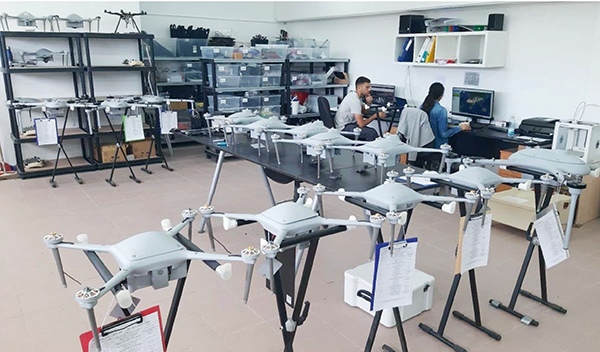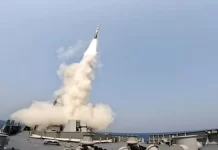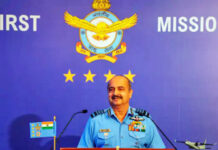Army Issues RFI for Micro RPAS
The defence ministry intends to procure 150 micro Remotely Piloted Aircraft System (RPAS) for the Army. A Request for Information (RFI) has been issued with responses required by 26 June.
A lightweight, aerial surveillance platform with day and night sensors to enhance the situational awareness of squad and troop involved in various special operations tasks. The Micro RPAS should be man portable easy for a soldier to carry and operate. The system should have an operational range of up to 5 Kilometers, weighing not more than 6 Kilograms (All Up Weight) and endurance of not less than 60 Minutes. The system should be foldable and suitable to be carried on man pack basis.
The Micro RPAS should be controlled by a ground controller with a data link established with Micro RPAS. The Micro RPAS should be able to detect targets by day and night. The system should have a day camera and a night camera. The system should be launched in a Vertical Takeoff and Landing mode (VTOL). The Micro RPAS should have the ability to transmit live video feed from GCS to remote location on user provided IP network with adequate bandwidth to support data transmission.
Each Micro RPAS should comprise of the aircraft, a Hand Held Ground Control Station (HHGCS), complete set of sensor packages (with day & night capability), commercially available spare AV batteries (three sets per AV) and two commercially available spare batteries each for HHGCS.
The weight including two man-portable backpacks should not exceed 15 Kilograms and must be operable by maximum two persons.
The mission range with maximum All Up Weight (AUW) should not be less than 5 Kilometers (with loiter time of minimum 45 Minutes at the maximum range). The Micro RPAS should have anti-jamming and anti-spoofing properties.
The time required for assembling the entire system and ready to launch should be within 15 minutes. and from transportable condition it should be possible to deploy the Micro RPAS within 20 minutes.
UAVs for Locust Control
The Ministry of Civil Aviation (MoCA), through an order dated May 21, permitted the use of drones to spray pesticide and in aerial surveillance and photography, specifically in “anti-locust” measures, with due safeguards. The civil aviation ministry’s conditional exemption is applicable only for rotary wing drones not exceeding 25 kg.
Hitherto, aerial spraying by drones was allowed only on an experimental and highly restricted basis, given the many risks involved.
The locusts swarms that come from across the western border wreak havoc in border states, UP and MP. Drone-tech will now help our farmer communities and government agencies in combating this menace.
The order was approved within 24 hours, after the agriculture ministry wrote to the civil aviation ministry seeking permission to use drones, due to the threat posed by locusts to food security, in exercise of powers conferred under Rule 160 of the Aircraft Rules, 1937.
The Faridabad-based Directorate of Plant Protection, Quarantine and Storage (DPPQS) has been made the nodal agency for use of drones in combating the locust swarms. The DPPQS will be allowed to operate its own drones or work with third-party service providers to cover as much of the affected area as possible.
To avoid delays in their deployment, the agency will only need to upload details of every flight and pesticide sprayed within seven days of drone flights. No prior permission is needed.
The drones will need to have a Unique Identification Number (UIN) or Drone Acknowledgment Number (DAN), as per the order. India has granted DANs to around 20,000 drones so far.
The move comes soon after the government fast-tracked approvals for drone use in aerial surveillance and photography by its departments to fight the Covid-19 pandemic. The civil aviation ministry has launched a portal, GARUD, for the same, and has permitted drone deployments even in densely populated urban areas.
The twin approvals could also set the stage for India coming up with progressive guidelines on drone use by civilians, said industry players. This could also boost the local drone industry, which has faced delays in getting various approvals from the government.
Boeing Unveils AI Drone
The Boeing aircraft manufacturer has presented the first three artificial intelligence (AI)-powered prototypes of an unmanned attack drone for the Royal Australian Air Force (RAAF), the company announced on 5 May.
According to Boeing, the drone, dubbed Loyal Wingman, is the first aircraft to be designed, engineered, and produced in Australia for more than half a century with mass production starting by the middle of the decade. According to Boeing, the Loyal Wingman drones will now be subject to rigorous ground and flight testing.
In February 2019, the Australian government announced an investment of $25.8 million in the project to produce the unmanned combat drone.
The Loyal Wingman unmanned aircraft can reportedly conduct intelligence missions on its own or provide support to manned aircraft.
Chinese Drones Make Up 99pc of U.S. Public Safety Stock
Bard College recently released the Public Safety Report on Drones, noting that 1,578 public safety agencies have purchased drones. Only 1% (924) of drones are Made in the USA. The remaining manufacturers listed in the report manufacture their drones or parts in China as well.
DJI is largely credited for brining drones to the mainstream market with the Phantom being the public safety drone of choice. Many users question if they can even buy an American made drone that can compete with DJI.
The Phantom offers the best camera shutter and suite of 3rd party apps to solve nuanced problems. Elite pilots always choose the Phantom for drone mapping, photography, inspections and videography.
Questions are being asked whether any American company can manufacture a drone that could compete at a reasonable price point. The footprint of American manufacturers is very small. The US simply cannot compete against the likes of DJI or even Autel.
The Trump Administration is expected to vastly restrict Chinese made drones and even Chinese made parts. Many lawmakers have been questioning public safety on their use of Chinese made drones due to security fears like possibility of DJI leaking data to Chinese servers.
If the American government were to eliminate the use of Chinese made parts, like brushless motors and simple propellers the entire drone industry would be affected.
According to Bard, the median cost of a small UAS was $12,000. It is high when compared to the average cost of a Phantom at $1,599.
The complexities in operating a ‘secure’ UAV, paired with the high cost to manufacturer the drone would eliminate this UAV as a competitor.

















